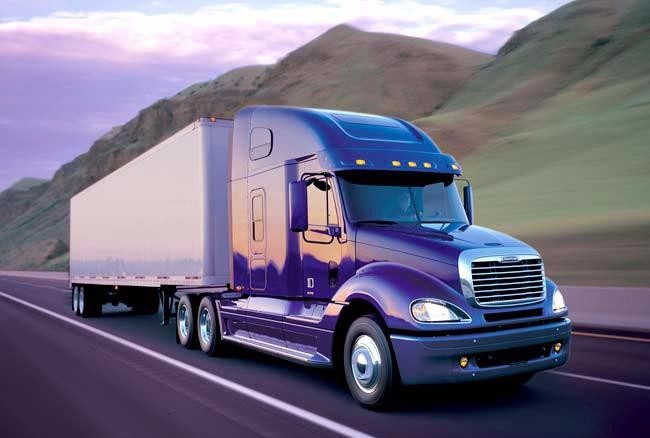You might think a self-driving truck can only be seen in over-the-top Hollywood films, but technology is getting really close to making this a reality. Recently one of the self-driving Google cars made national news as it was rear-ended by a driver who failed to brake at a traffic light injuring the three Google employees who were in the car at the time. This led many people to question the reality and safety of self-driving vehicles. While most automobile manufacturers are focusing on making passenger vehicles driverless, one company, Daimler, is testing the first self-driving semi-truck. Daimler, the German multinational automobile corporation, who owns Mercedes Benz, is the largest truck manufacturer in the world.
While Google has been getting all the attention for its cars, Daimler has been quietly working and testing the first semi-autonomous freight truck and it just might beat Google to the marketplace. Google and other self-driving cars face more challenges as passenger cars need to be able to drive anywhere, from crowded city streets to bumpy backcountry roads to the open freeways of America. Designing a self-driving freight truck is a bit simpler as most long-haul trucks spend their time on long highways and freeways. While Google hopes to bring their self-driving cars to the marketplace by 2020, Daimler’s Freight liner Inspiration Truck has already been officially licensed to operate on the public highways of Nevada.
Your initial thought might be to freak out. If trucks become self-driving then your job as a truck driver is at risk. Don’t worry! Self-driving trucks might actually make your life easier and better for the environment. In the United States, heavy trucks represent about 5% of the total vehicle population, yet consumes 20% of total transportation fuel. Despite their surprisingly fuel-efficient powertrains, self-driving trucks can reduce fuel bills by 4-7%. Since the average long-haul truck travels an average of 101,000 miles, this translates to thousands of dollars in savings per truck every year. Rejoice!
Daimler and Peloton Technology, California-based technology company, is championing the idea of creating truck pelotons that can further reduce the cost of fuel and haul more freight at a time. While a peloton or caravan of driverless trucks sounds pretty far-flung, technically it is quite feasible. The lead truck would have one driver in the cab who would lead the caravan of a dozen or so trucks along the highway. Peloton’s platooning technology connects two or more trucks via cloud technology and uses safety features like active braking, which is already found on many passenger cars today. The lead truck driver would control all the trucks, but drivers will still be needed to maneuver the highway exits, city streets, and backing up to the loading dock.
Semi-autonomous freight trucks might also help curve the driver shortage. The American Trucking Association says the trucking industry employs more than 7 million drivers, but the number of drivers have fallen in the recent years. The ATA estimate a shortage of about 40,000 drivers that could grow to about 240,000 by 2022. As you know, truck driving is a tough job and not everyone is cut out for its physical and mental demands. With self-driving trucks and the potential for pelotons, less drivers will be needed in the future.
One of the biggest questions everyone has is safety. How can a 40 ton self-driving 18-wheeler be safe? In 2012, over 330,000 large trucks were involved in crashes that killed about 4,000 people in the United States. Close to 90% of those were caused by driver error. Truck drivers are human. We can be tired, stressed, and angry. Thankfully self-driving vehicles are computers that don’t share human emotions. In the recent years, some of the country’s largest freight carriers have started to equip their trucks with active safety features like lane control and automatic braking. It only makes sense to continue adding more autonomous features to trucks. While self-driving technology could potentially reduce accidents caused by driver fatigue and distraction, no system is foolproof.

